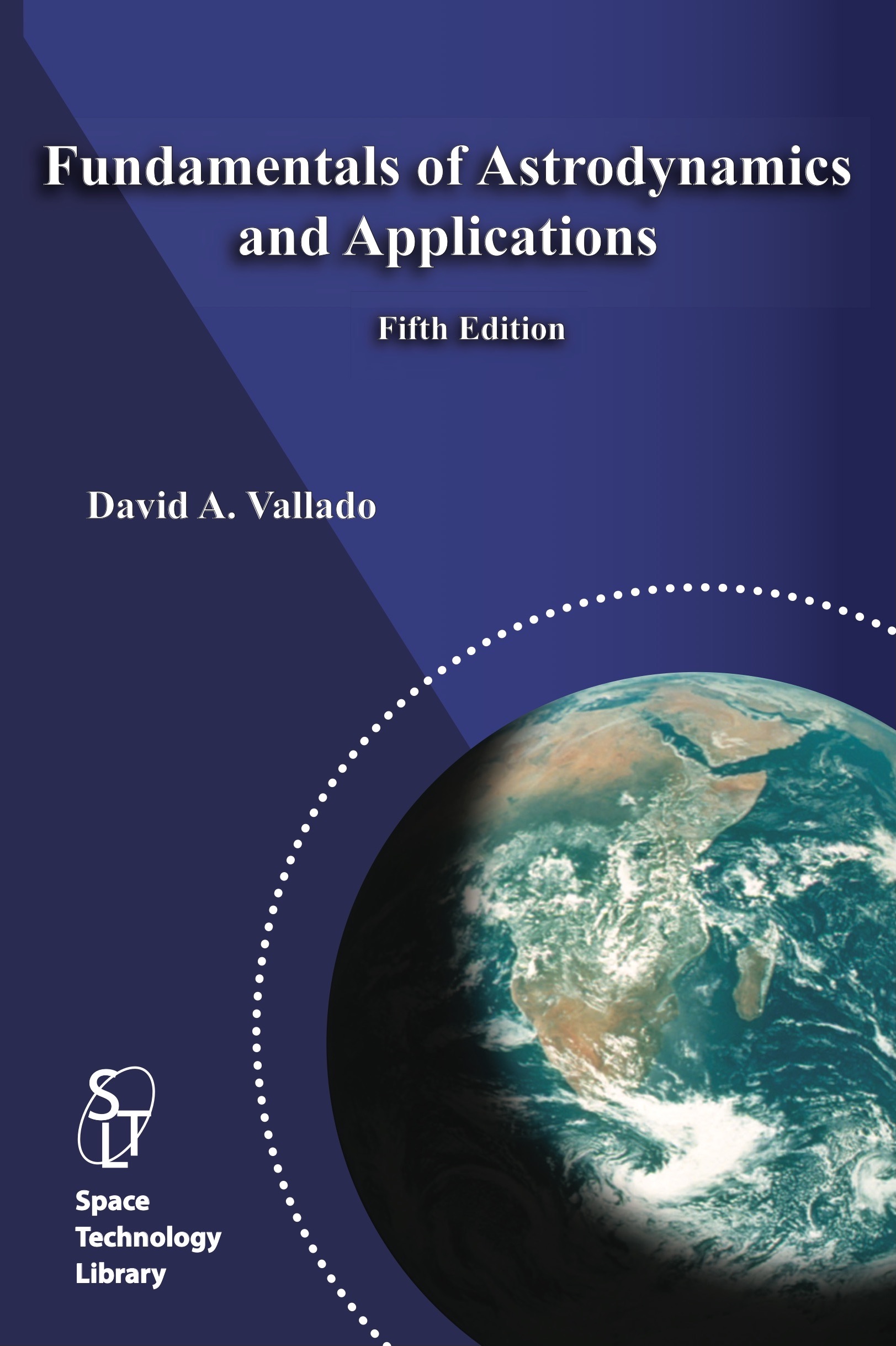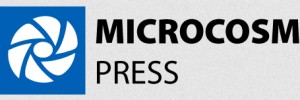
Fundamentals of Astrodynamics and Applications Fifth Edition
Fundamentals of Astrodynamics and Applications
Fifth Edition
by
David Vallado
Last updated 2023 May 10
Purchase the Text
ISBN: 978-1881883210 and 978-1881883227. Pages: 1122. Publisher: Microcosm Press Year: March 2022. This edition is available in softcover (List $120.00/Microcosm $97.00), hardbound (List $180.00/Microcosm $160.00), and e-book (coming soon from RedShelf.com List TBD) formats.
-
-
- Astrobooks.com
Contact bookstore@smad.com if you have problems or questions.
- Astrobooks.com
-
Errata
-
-
- Errata listing for First Edition (as of 2000 Apr 19)
- Errata listing for Second Edition (as of 2004 Aug 01)
- Errata listing for Second Edition, Second Printing (as of 2006 February 18)
- Errata listing for Third Edition (as of 2011 Jun 20)
- Errata listing for Fourth Edition [Consolidated Errata for all editions] (as of 2019 Jun 18)
- Errata listing for Fifth Edition (as of 2023 Mar 2)
-
Software and Data
-
-
- Computer software in FORTRAN (as of 2023 May 09)
- Computer software in C++ (as of 2023 May 09)
- Computer software in Pascal (as of 2023 May 09)
- Computer software in MATLAB (as of 2023 May 09)
- Computer software in C# (as of 2023 May 09)
- Data for all versions (as of 2023 May 09)
-
Some of the code is available in other languages, although not all routines are present. Examples are Java and Excel (VBA).
Organization of the Material
The code is available in several languages, and it is organized roughly according to function. Where feasible, all the time routines are in one file, the math techniques in another, and so forth.
| AST2BODY | Two-body relations |
| COMPLX | Complex math |
| CONSTS | Constants WGS-84, JGM-2, etc. |
| ASTDC | Differential correction |
| ASTINTER | Interplanetary |
| ASTIOD | Initial orbit determination |
| ASTMANV | Maneuvers |
| ASTMATH | Math |
| ASTPERT | Perturbation |
| ASTREDUC | Reduction of coordinates |
| ASTTIME | Time |
| ASTUTIL | Character operations |
| SGP4UNIT | SGP4 routines |
| See “Revisiting Spacetrack Report #3” [AIAA 2006-6753] for more details. | |
| SGP4DC | SGP4 Orbit Determination routines |
| See “SGP4 Orbit Determination” [AIAA 2008-6770] for more details. |
Several data files are needed for some of the files.
| NUT85.DAT | Nutation coefficients for planetary 85 |
| NUTATION.DAT | Nutation coefficients for 106 |
| ATMOSEXP.DAT | Sample exponential atmosphere values |
| TESTASTF.DAT | Input for sample test program |
| SENSOR.DAT | Sensor sample values |
| GEOS1.IN | DC input test 1 |
| GEOS2.IN | DC input test 2 |
| GEOS5.IN | DC input test 5 |
| GEOS1.TXT | DC sample output results 1 |
| GEOS2.TXT | DC sample output results 2 |
| GEOS5.TXT | DC sample output results 5 |
| SGP4-VER.TLE | Sample SGP4 test cases |
Cross-Reference of Available Functions [Excel spreadsheet] (as of 2018 Mar 15)
Within each file there are specific routines to accomplish various operations. Effort has been taken to use similar names and function scopes, although there are some differences based on language features. The SOFTWARE worksheet discusses the specific routines that are available within each larger technical area.
The ALGORITHMS worksheet lists which routines are available (MATLAB).
The EXAMPLES worksheet lists what MATLAB scripts will perform the example exercises in the text. Many are complete, but a few remain to finish all the examples in the text.
The test program is a simple program that executes the input/output operations of each subroutine in that package. There isn’t anything fancy about it. It’s just intended to be a quick check of the answers. The TESTASTF.DAT file contains my results using the codes. Additional work is needed to update this file, but it’s a start.
STK Scenarios from Chapter 6 (5,592,553 bytes) (as of 2011 Dec 26)
These scenarios are useful to see the various transfers in 3-D. Other scenarios are in various stages of development.

